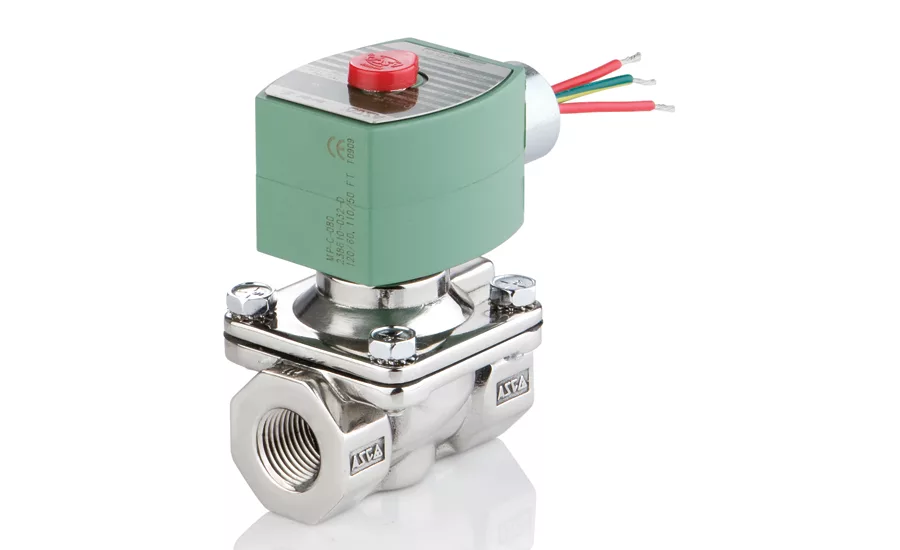Proper valve selection optimizes fermentation in alcohol beverages
Valves help control temperature, pressure and viscosity

The alcohol business is booming. The explosion of craft beers, demand for new wine blends and rise of international distilleries mean consumers now have more choices than ever. No matter the size, beverage manufacturers need to make sure their products maintain the same high levels of quality and taste.
The key lies in the fermentation process, which requires precise temperature control to ensure quality, consistency and taste across various beverage styles and flavors. Optimum temperature control requires the right valve system to control heating and/or cooling parameters.
Alcoholic beverage producers typically control tank temperatures using glycol or ammonia systems. This nontoxic liquid media flows through thermal jackets surrounding the fermentation tanks. In a closed circuit, the glycol is pumped through a chiller, where it is cooled, and then flows back down through the jackets — cooling the tanks and their contents. Not only does temperature affect the speed of the fermentation process, but it also affects the taste and quality of the final beverage.
Because fermentation is such a vital process, it’s no surprise beverage-makers increasingly are looking to install or upgrade their tank cooling and heating systems. But these modifications don’t come cheap, nor without challenges. Many facilities, particularly smaller operations, have limited physical space. As a result, tank systems need to be positioned as close as possible to each other to maximize floor space and remain accessible during maintenance. The following are other challenges to consider:
- The high cost of energy: Energy is one of the largest overhead costs in the food and beverage industry. Because fermentation is considered a wet environment, beverage-makers also need to have additional electrical safety features in place.
- Lengthy piping processes: The labor required for piping and wiring can be costly and very time-consuming.
- Potentially unreliable yields. For wineries, in particular, any issues that compromise batches during extended fermentation periods equate to several years’ worth of lost time, materials and cost.
In addition to ensuring precise temperature control, proper valve selection can address the challenges associated with installing, maintaining and upgrading fermentation heating and cooling systems. Depending on the system, it also is important to select valves that are rated to handle glycol or ammonia.
Suppliers like Emerson can help an operation select the right fluid automation product to meet one’s individual needs.
Choose from the following valve solutions, all of which are suitable for systems using glycol or ammonia:
Two-way valves: Two-way valves are a traditional valve type for fermentation heating and cooling systems. The high-flow solenoid valves come in a range of pressure ratings, sizes and resilient materials like brass or stainless steel, providing long service life and low internal leakage.
Next-Gen valves: Next-Generation solenoid valves include several electrical enhancements designed for greater energy savings and a longer service life. Look for valves that incorporate power management circuits, as well as electrical surge suppression to both the solenoid and electronic controls.
Because the valve’s DC characteristics now rival AC pressure and flow values, manufacturers can eliminate AC output cards to simplify control, reduce wiring costs and provide safer working environments for DC users.
Angle body valves: Air-operated, direct-acting angle body valves are ideal for aggressive and high-viscosity fluids. Many models feature a straight-through design and wide range of advanced options, including a signaling box, compact positioner for proportional control and stroke limiter. They allow tight shutoff in both directions and contain no bleed holes — eliminating the chance of glycol plugging.
Six-port valves: Comprised of two actuators, six-port valves provide the benefits of the traditional angle seat valve in a single body design. Manufacturers can use one valve body to control hot and cold glycol supply and return flows, which reduces installation time.
In addition to proper valve selection, it’s important to consider automating your fermentation heating and cooling systems to achieve even greater thermal precision. For example, the G3 Electronic Fieldbus Platform makes this process quick, simple and painless. G3 integrates communication interfaces and input/output (I/O) capabilities into your pneumatic valve manifolds — allowing your PLC to more efficiently turn valves on and off. BI
Looking for a reprint of this article?
From high-res PDFs to custom plaques, order your copy today!



